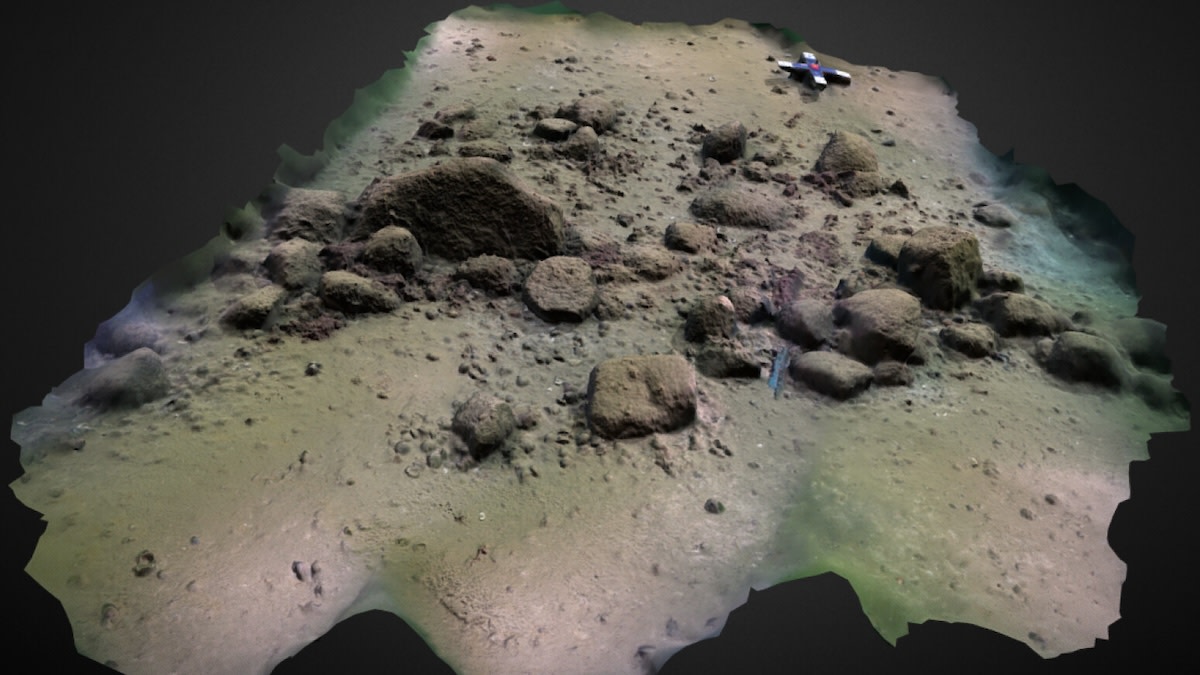
When romping in the woods, every now and then, we find evidence of previous hunters: a fire ring, shotgun shell, or meat pole. A reminder that our sojourn in a spot is temporary, that people have been hunting before us, and will continue to do so long after.
Recently, scientists in Germany discovered evidence of hunters from long before our time: a stone wall thought to have been used by hunter-gatherers to pursue reindeer nearly 11,000 years ago known as the “Blinkerwall.” Now submerged almost 70 feet in the Baltic Sea, the wall is a relic from a more glaciated time when the sea level was lower and much of the Baltic was dry ground.
The structure itself is composed of 1,673 stones (yes, the scientists counted them all), most less than three feet in height, spread out over about 3,000 feet in length. It’s about six miles from the nearest shoreline. And while the scientists considered that the wall may have formed through natural processes, such as wave transport or by a glacier, they’ve concluded that the most likely origins are anthropogenic. And indeed, the finer structure of the wall supports that hypothesis. It’s formed by about 300 large, unmovable stones, linked together in a semi-linear fashion by hundreds of smaller stones, likely movable by an individual or a small group of people.
The researchers estimated the age of the wall by carbon dating wood fragments found in and around the structure. At 11,000 years in age, the wall predates agrarian societies, meaning Stone Age hunter-gatherers were the likely architects. If the researcher’s age estimate is correct, it “puts the Blinkerwall into range of the oldest known examples of hunting architecture in the world and potentially makes it the oldest man-made megastructure in Europe.”
Most other Stone Age “megastructure” relics in Europe were likely on dry ground and were dismantled or built over by subsequent civilizations in the thousands of years since. The Binkerwall, however, has been underwater for several thousand years, which is likely why it has remained intact for so long.
The most likely interpretation of the wall is that it was used to corral or herd animals during a hunt—most likely Eurasian reindeer on their migration route. The theory corresponds to similar structures found around the world, dating back to around the same time period. In North America at the time, Clovis hunters were targeting woolly mammoths with primitive weapons, stone corrals, and drive lines. Some of the oldest known hunting artifacts on earth, such as an atlatl dart found on the Beartooth Plateau in Montana, date back to the same era.
The use of stone walls for hunting, however, extended beyond the Stone Age. Similar, more recent walls have been documented around the world, including two structures about 9,000 years old submerged beneath Lake Huron in Canada. Native Americans in Montana used similar structures to hunt bison as recently as 200 to 300 years ago.
The actual function of these stone walls is multifold, and each site is different. Some funneled animals into corrals where they could be targeted, while others provided blinds along the walls where hunters could wait in ambush. Archeologists—and modern-day biologists—predict that animals galloping at full speed have trouble hopping laterally over a stone wall—even one small in stature. The exact use of the Blinkerwall is unknown. The researchers say it could have been used to drive animals, but there are spots along it that could have been used as blinds.
Even more intriguing to archeologists is what structures like the Blinkerwall reveal about hunter-gatherer culture and dynamics. Permanent structures draw hunters back year after year, which means there might be other artifacts, dwelling structures, or relics nearby. The size of the wall also indicates a significant amount of teamwork and cooperation was needed, both for construction, and to use the wall for hunting.
In a modern era, with high-powered rifles and digital maps on our phones, it’s easy to forget our roots as primitive hunter-gatherers. Discoveries, like the submerged wall in Germany, remind us of those who came before and the creative methods early hunters used to harvest game in a time when stones were the latest technological advancements.
Feature image is a 3D model of a section of the Blinkerwall adjacent to the large boulder at the western end of the wall via Philipp Hoy, Rostock University.




